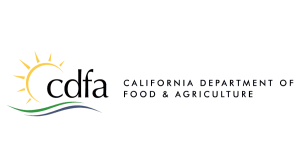 Pollinators Get a Boost in Santa Barbara Thanks to CDFA Funds
Pollinators Get a Boost in Santa Barbara Thanks to CDFA Funds
By Community Environmental Council
Recently, the California Department of Food and Agriculture (CDFA) awarded a nearly $2 million grant through its Pollinator Habitat Program to the Cachuma Resource Conservation District and its partners (Community Environmental Council, Santa Barbara Botanical Garden, and Ventura County Resource Conservation District), to boost pollinator habitat on agricultural lands along California’s Central Coast.
California produces more than one-third of the nation’s vegetables and two-thirds of the nation’s fruit and nuts, of which an estimated $11.7 billion are dependent on pollinators. Unfortunately, due to habitat destruction, pesticides, disease, and climate change, pollinator populations have dramatically declined. The loss of pollinators in California affects both agricultural and natural ecosystems.
The CDFA Pollinator Habitat Program administers funding to established and experienced organizations to work directly with farmers and ranchers to install habitat and implement management practices that support pollinators. The program is aligned with the suite of Climate Smart Agriculture incentive programs administered by CDFA’s Office of Environmental Farming and Innovation.
“Santa Barbara and Ventura Counties are heavily agricultural communities, producing a diverse array of crops that compose a significant portion of the region’s GDP,” said Doug Kern, Executive Director of the Gaviota Coast Conservancy. “These crops rely on healthy pollinator populations to thrive and in recent years these populations have been steadily declining. This funding will mark a critical step in mitigating the effects of this decline by directly supporting pollinator habitat installation.”
The program’s primary objective is to support pollinators through provision of floral resources, host plants and other elements of suitable habitat. Projects funded through the PHP are expected to have additional benefits to California’s biodiversity and agricultural production. Projects will support integrated pest management, support beneficial species (beyond pollinators), enhance carbon sequestration and improve soil health among other co-benefits.
In collaboration with the project partners, the Community Environmental Council is working to identify eligible farms and ranches in the region, and provide technical assistance. Applications are currently open for farmers and ranchers who wish to apply for up to $200,000 to plant and maintain pollinator habitats, such as hedgerows, cover crops or riparian forest buffers. The application is here: cec.pub/pollinatorapp
“This project aligns with CEC’s broader climate resilience and climate-smart agriculture initiatives that aim to reverse the compounding effects of climate change, such as extended drought, extreme heat, and flood,” said Em Johnson, CEC’s Director of Climate Resilience.“To build true community-wide resilience, CEC is pioneering climate adaptation and resilience efforts that are rooted in equity and catalyzed by place-based innovation, elevating solutions that are community-led, ready to activate, and intersectional, supporting a broad range of community needs.”
To learn more about this work, visit www.cdfa.ca.gov/oefi/php/
We are here to share current happenings in the bee industry. Bee Culture gathers and shares articles published by outside sources. For more information about this specific article, please visit the original publish source: Pollinators Get a Boost in Santa Barbara Thanks to CDFA Funds – The Santa Barbara Independent






